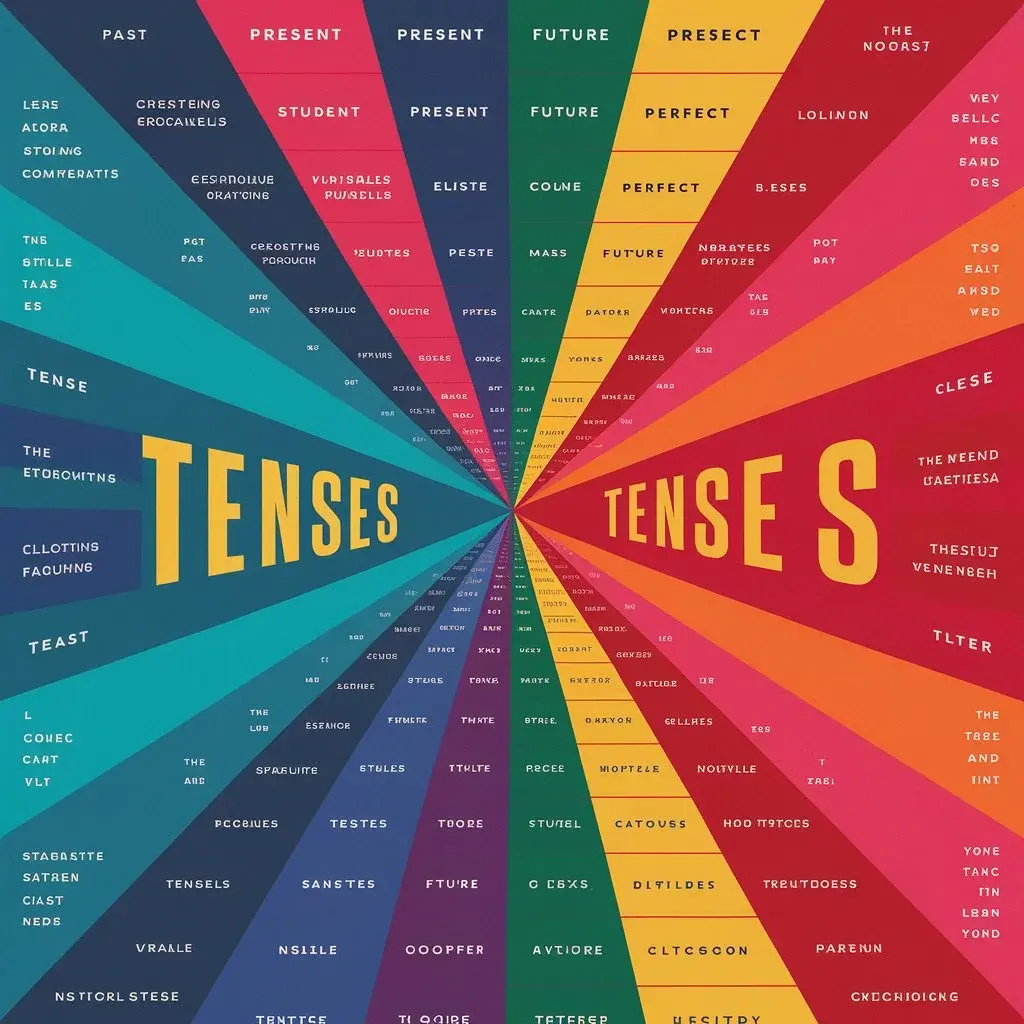Below is a tense chart in English outlining various tenses. This includes tense structure ,examples to illustrate each tense in context.
Mastering the use of verb tenses is essential for effective communication in English. Understanding how to correctly form and apply various tenses allows speakers and writers to convey time-related nuances with clarity and precision. This comprehensive guide provides a detailed tense chart along with examples to illustrate each tense in context. By familiarizing yourself with these structures, you can enhance your ability to express past, present, and future actions accurately.
Whether you’re a beginner or looking to refine your skills, this overview of English tenses will serve as a valuable resource in your learning journey.
What is tense in English grammar
Tense in English grammar refers to the form of a verb that indicates the time when an action or event occurs. It helps us understand the timing of actions in relation to the present, past, or future.
Key Components of Tense:
Time Reference:
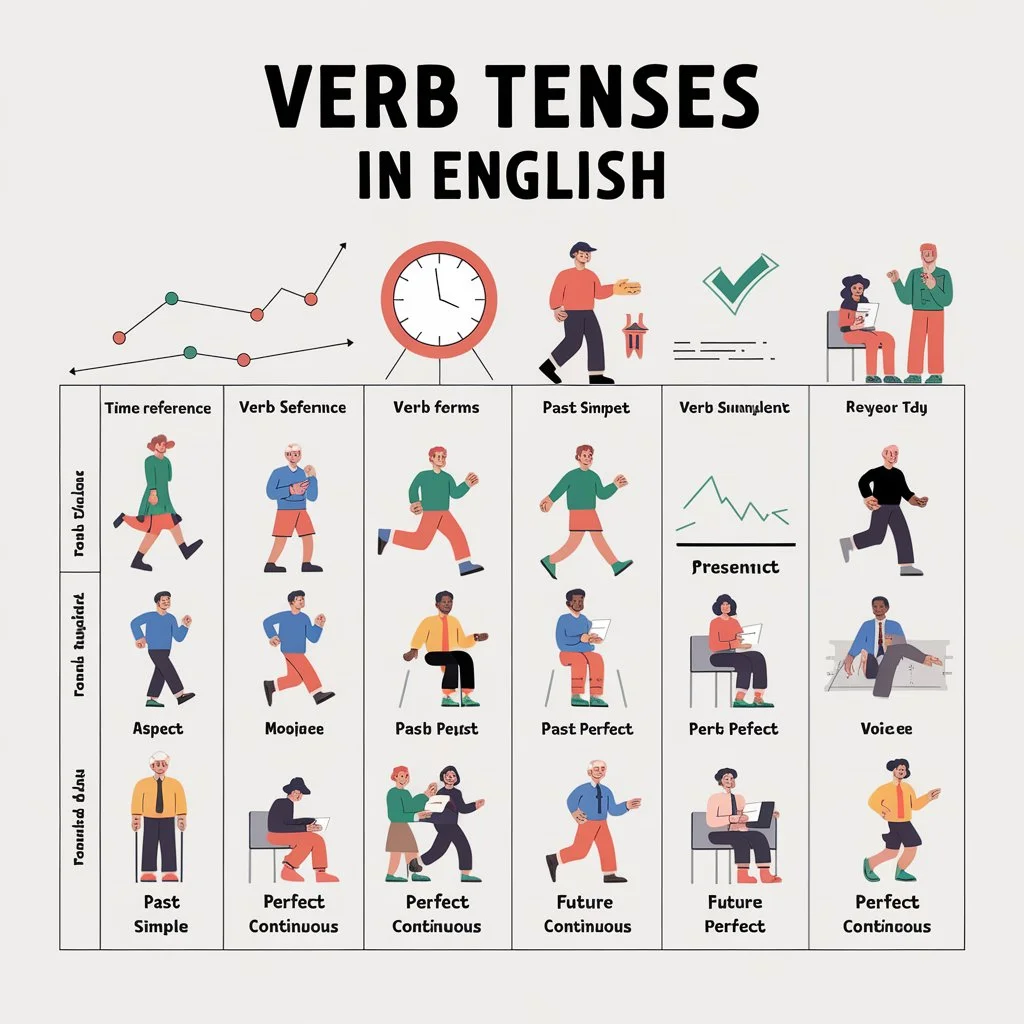
Indicates whether an action occurred in the past, present, or future.
Provides a framework for when the action takes place relative to the current moment.
Verb Forms:
Each tense has specific verb forms that change based on the time frame of the action.
Includes the base form, past form, and past participle.
Aspect:
Conveys the nature of the action: whether it is completed, ongoing, or habitual.
Includes simple, continuous, perfect, and perfect continuous aspects.
Mood:
Indicates the attitude of the speaker towards the action.
Common moods include indicative (statements of fact), imperative (commands), and subjunctive (hypothetical or wishful statements).
Voice:
Refers to whether the subject of the sentence is performing the action (active voice) or receiving the action (passive voice).
Subject-Verb Agreement:
Ensures that the verb agrees with the subject in number (singular or plural) and person (first, second, or third).
Modality:
Adds layers of meaning related to necessity, possibility, permission, or ability.
Includes modal verbs like can, could, may, might, must, shall, should, will, and would.
Temporal Adverbs:
Words that provide additional information about the timing of the action.
Examples include yesterday, today, tomorrow, now, then, already, just, and yet.
Contextual Clues:
The surrounding text or conversation helps clarify the specific time or nuance of the action.
Verb Forms:
In English grammar, verbs change their forms to specify tense, aspect, mood, voice, and
agreement with the subject. To use tenses correctly, you need to understand the different forms of verbs. The main three forms of verbs that you need to know are:
- Base Form
- Past Form
- Past Participle
- Present Tense (V1)
- Past Tense (V2)
- Past Participle (V3)
Types of Tenses
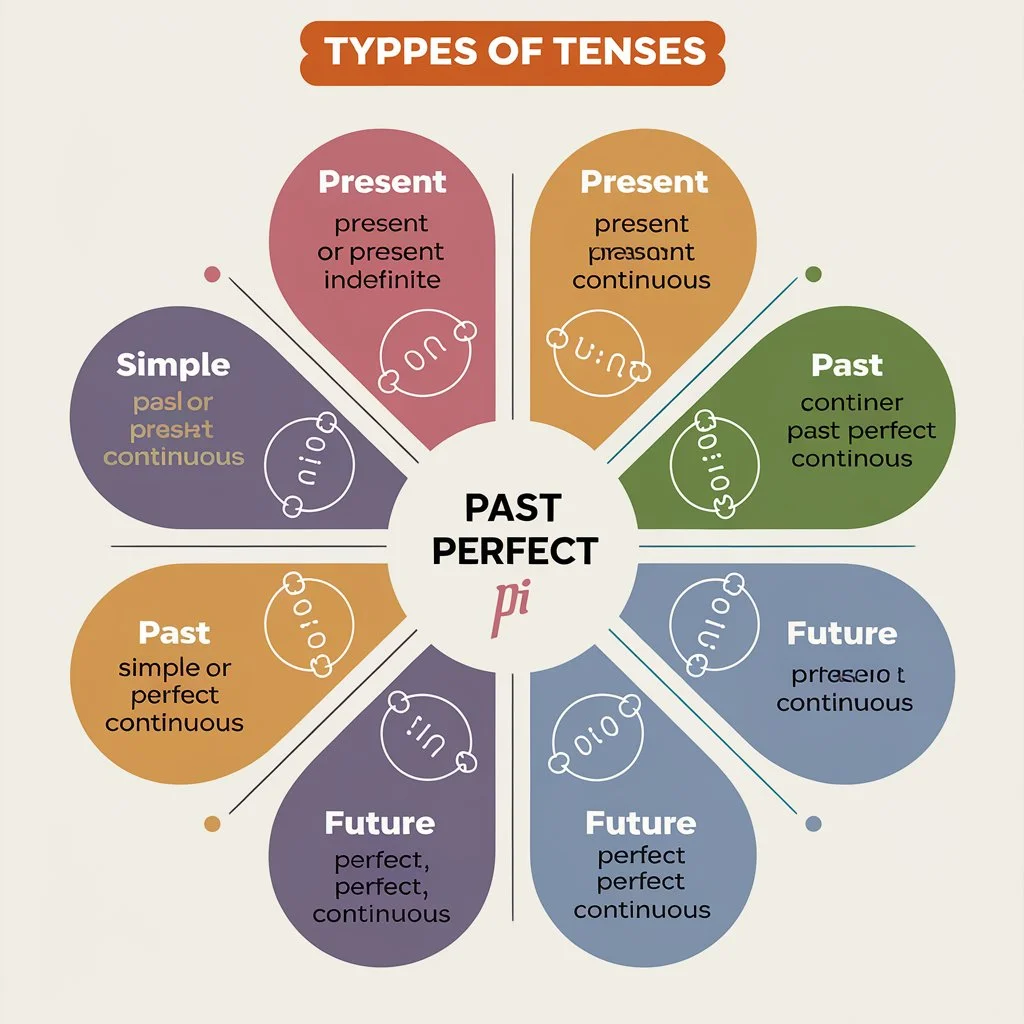
There are three main types of tenses based on the time frame of the action: past, present, and future. Each type is further subdivided into four different tenses. So, there are a total of 12 tenses in English grammar. Each tense serves a specific purpose in expressing actions or events. By understanding each type of tense, you can communicate about time-related situations. Here are the types of tenses:
Present:
- Simple Present or Present Indefinite
- Present Continuous
- Present Perfect
- Present Perfect Continuous
Past:
- Simple Past or Past Indefinite
- Past Continuous
- Past Perfect
- Past Perfect Continuous
Future:
- Simple Future or Future Indefinite
- Future Continuous
- Future Perfect
- Future Perfect Continuous
| Tense | Tense Structure | Example |
| Present Simple | Subject + Verb (base form) | – She eats an apple every day. <br> – She runs five miles daily in the park. |
| Present Continuous | Subject + am/is/are + Verb (-ing form) | – They are playing football right now. <br> – He is walking alongside the road. |
| Present Perfect | Subject + have/has + Past Participle | – He has finished his homework. |
| Present Perfect Continuous | Subject + have/has been + Verb (-ing form) | – She has been studying for two hours. |
| Past Simple | Subject + Verb (past form) | – I visited Paris last summer. |
| Past Continuous | Subject + was/were + Verb (-ing form) | – Rita was reading a book when the phone rang. |
| Past Perfect | Subject + had + Past Participle | – They had already left when I arrived. |
| Past Perfect Continuous | Subject + had been + Verb (-ing form) | – He had been waiting for an hour before the bus finally came. |
| Future Simple | Subject + will + Verb (base form) | – We will go to the beach tomorrow. |
| Future Continuous | Subject + will be + Verb (-ing form) | – At this time tomorrow, they will be traveling to London. |
| Future Perfect | Subject + will have + Past Participle | – By next year, she will have finished her degree. |
| Future Perfect Continuous | Subject + will have been + Verb (-ing form) | – I will have been waiting for two hours by the time you arrive. |
This tense chart provides a concise overview of the forms and usage of each tense in English.
Verb Tense Chart with Rules and Examples
Tense Rules
In English grammar, understanding the tense rules is important for effective communication. These rules help us determine which tense to use in different situations.
English verb tenses can be complex at times, but there are some basic rules to follow when selecting the appropriate tense. Here are some key verb tense rules to keep in mind:
Rule 1: Use the present simple tense to describe habits, routines, facts, or things that are generally true. Example: I visit the museum every Saturday.
Rule 2: Use the present continuous tense to describe actions happening at the moment of speaking. Example: They are studying for their exams right now.
Rule 3: Use the present perfect tense to describe actions that happened recently, or are connected to the present. Example: He has just submitted his assignment.
Rule 4: Use the past simple tense to describe actions that happened at a specific time in the past, and are now completed. Example: They bought a house last year.
Rule 5: Use the past continuous tense to describe actions that were happening at a specific time in the past. Example: I was cooking when they came.
Rule 6: Use the past perfect tense to describe actions completed before another past action or a specific point in the past. Example: The guests had already left when I arrived.
Rule 7: Use the future simple tense to describe actions that will happen in the future. Example: We will meet at the restaurant tomorrow.
Rule 8: Use the future continuous tense to describe actions that will be happening at a specific time in the future. Example: They will be traveling to London at this time tomorrow.
Rule 9: Use the future perfect tense to describe actions that will be completed before a specific point or event in the future. Example: My daughter will have finished her degree by next year.
Verb Tenses in English with Examples
Tense
Affirmative
Negative
Interrogative
Present simple tense
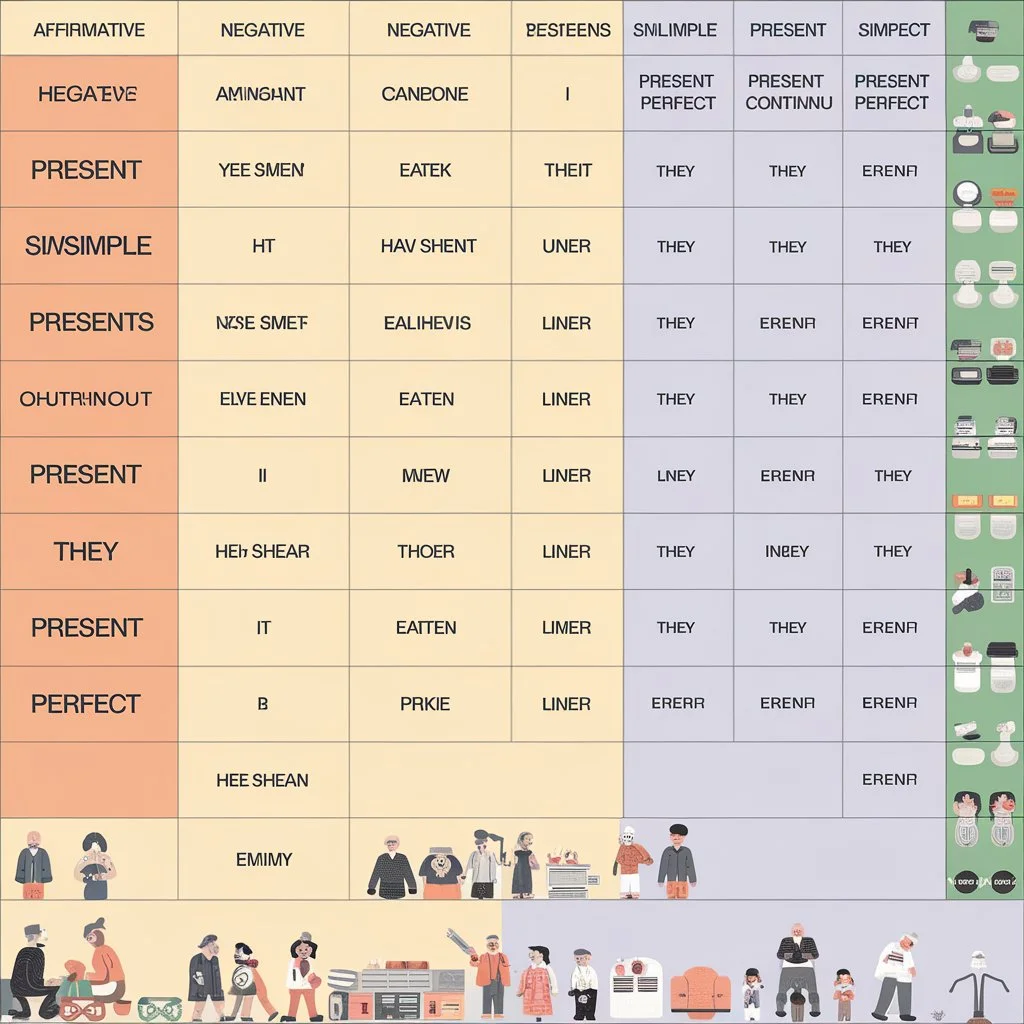
| Tense | Affirmative | Negative | Interrogative |
| Present Simple | I eat | I do not eat / I don’t eat | Do I eat? |
| He/she/it eats | He/she/it does not eat / He/she/it doesn’t eat | Does he/she/it eat? | |
| They eat | They do not eat / They don’t eat | Do they eat? | |
| Present Continuous | I am eating | I am not eating | Am I eating? |
| He/she/it is eating | He/she/it is not eating | Is he/she/it eating? | |
| They are eating | They are not eating / They aren’t eating | Are they eating? | |
| Present Perfect | I have eaten | I have not eaten / I haven’t eaten | Have I eaten? |
| He/she/it has eaten | He/she/it has not eaten / He/she/it hasn’t eaten | Has he/she/it eaten? | |
| They have eaten | They have not eaten / They haven’t eaten | Have they eaten? |
Past simple tense
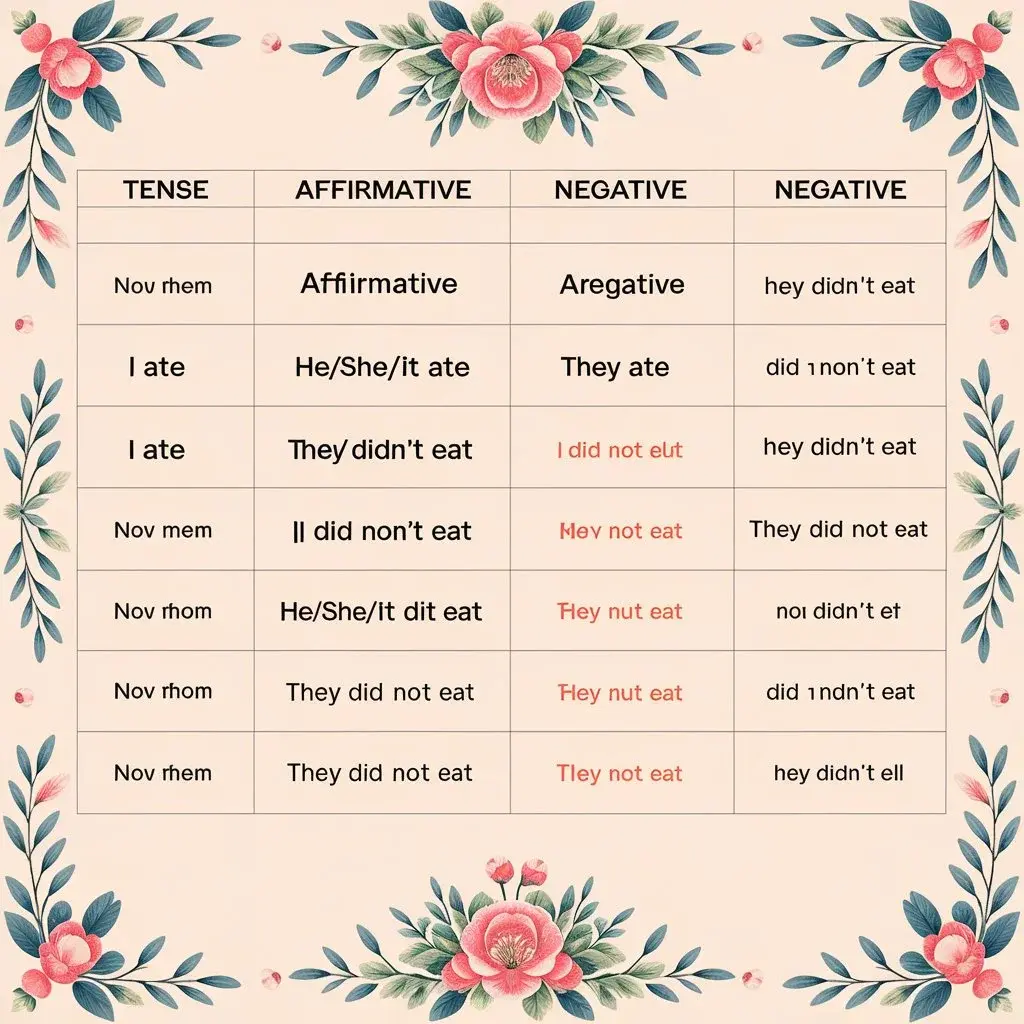
| Tense | Affirmative | Negative | Interrogative |
| Past Simple | I ate | I did not eat / I didn’t eat | Did I eat? |
| He/she/it ate | He/she/it did not eat / He/she/it didn’t eat | Did he/she/it eat? |
| They ate | They did not eat / They didn’t eat | Did they eat? |
| Past Continuous | I was eating | I was not eating | Was I eating? |
| He/she/it was eating | He/she/it was not eating | Was he/she/it eating? |
| They were eating | They were not eating / They weren’t eating | Were they eating? |
| Past Perfect | I had eaten | I had not eaten / I hadn’t eaten | Had I eaten? |
| He/she/it had eaten | He/she/it had not eaten / He/she/it hadn’t eaten | Had he/she/it eaten? |
| They had eaten | They had not eaten / They hadn’t eaten | Had they eaten? |
Future Simple tense

| Tense | Affirmative | Negative | Interrogative |
| Future Simple | I will eat | I will not eat / I won’t eat | Will I eat? |
| He/she/it will eat | He/she/it will not eat / He/she/it won’t eat | Will he/she/it eat? | |
| They will eat | They will not eat / They won’t eat | Will they eat? | |
| Future Continuous | I will be eating | I will not be eating | Will I be eating? |
| He/she/it will be eating | He/she/it will not be eating | Will he/she/it be eating? | |
| They will be eating | They will not be eating / They won’t be eating | Will they be eating? | |
| Future Perfect | I will have eaten | I will not have eaten / I won’t have eaten | Will I have eaten? |
| He/she/it will have eaten | He/she/it will not have eaten / He/she/it won’t have eaten | Will he/she/it have eaten? | |
| They will have eaten | They will not have eaten / They won’t have eaten | Will they have eaten? |
Grammar Learning
Grammar learning refers to the process of understanding and mastering the rules that govern how words are used in a language. It involves learning about various aspects such as sentence structure, verb conjugation, and tense usage. For instance, understanding the subject-verb agreement is a key part of grammar learning. This rule ensures that the verb in a sentence matches the subject in number (singular or plural). For example:
- Correct: She runs every morning.
- Incorrect: She run every morning.
Mastering grammar helps in constructing clear, correct, and effective sentences.
Tense Application
Tense application involves using the appropriate verb tenses to indicate when an action or event occurs. It’s essential for expressing the timing of actions, whether in the past, present, or future. For example:
- Present Tense: I read books every day. (Indicates a regular action in the present)
- Past Tense: I read a book yesterday. (Indicates a completed action in the past)
- Future Tense: I will read a book tomorrow. (Indicates an action that will happen in the future)
Proper tense application ensures your sentences accurately convey when something happens, making your communication more precise.
FAQs
What is the present simple tense?
The present simple tense describes actions that happen regularly or are always true. For example, “I eat breakfast every morning” or “The sun rises in the east.”
How do I use the past continuous tense?
The past continuous tense describes actions that were happening at a specific time in the past. For example, “She was reading a book when I called” or “They were playing soccer at 3 PM yesterday.”
What is the future perfect tense?
The future perfect tense describes actions that will be completed before a certain point in the future. For example, “By next year, I will have finished my degree” or “They will have left by the time you arrive.”
How is the present perfect tense used?
The present perfect tense describes actions that happened at an unspecified time in the past or actions that started in the past and continue to the present. For example, “I have visited France” or “She has lived here for five years.”
What is the past perfect tense?
The past perfect tense describes actions that were completed before another action in the past. For example, “I had eaten dinner before they arrived” or “She had finished her homework by the time the movie started.”
Conclusion
Understanding the nuances of English verb tenses is crucial for effective communication, as they allow us to express actions and events accurately in relation to time. Each tense—from the present simple to the past perfect continuous—serves a distinct purpose in indicating when an action occurred or will occur. Mastery of these tenses not only enhances clarity in writing and speaking but also enables us to convey subtle differences in timing, duration, and completion of actions.
By grasping the structure and usage of each tense, learners can navigate various contexts with confidence, ensuring their messages are conveyed with precision and clarity. Continual practice and application of these tenses are key to becoming proficient in English grammar and communication.

It’s Elara Winters, your guide at “Grammer Grove.” I’ve dived into the intricacies of crafting the perfect English writing sections for your project, research paper, or thesis. With a wealth of experience in this field, I’m here to help you express gratitude and appreciation effectively. Join me on this journey, and let’s make your English writings shine!
